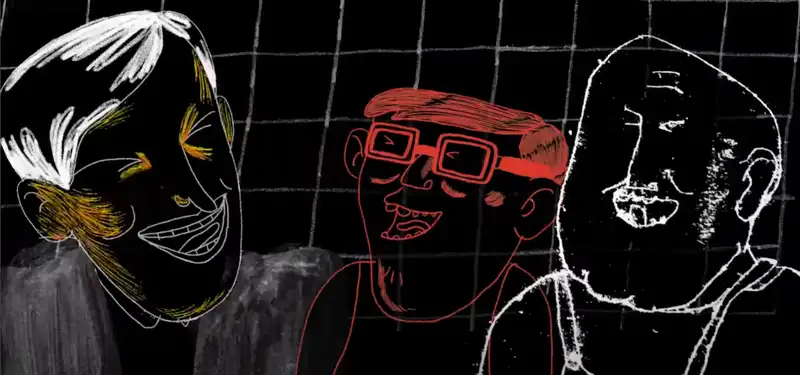Sep 13, 2023
2024 Academy Award Contender for Best Short Film: “Oneluv” directed by Varya Yakovleva
Welcome to Cartoon Brew's spotlight series highlighting animated short films that have qualified for the 2024 Academy Awards. There are several ways for a film to qualify for an award. In this edition, we will focus on films that have won an Oscar-eligible award at a festival that is eligible for the Academy Awards.
Today's short film is “Oneluv” by France-based Russian director Valya Yakovleva. The film qualified for Animafest Zagreb, where it won the Grand Prix.
In “Oneluv,” strangers visit the home of a young couple. Taking advantage of the host's hospitality, the unexpected guests cause the couple to act rashly and destroy order and harmony within the family. The disorder and uninvited guests in the apartment are reflected in the film's inconsistent illustration style and in Yakovleva's choice to leave in minor “imperfections” that magnify the intruders' misdeeds.
Cartoon Brew: Director Yakovleva has always been unafraid to incorporate “errors” into her work. How does embracing imperfection benefit or challenge your creative process? I started using this principle in graphics and it helped me find my own style in illustration. After academic school I let myself go and allowed myself to paint the “wrong” pictures. I got to know myself better, learned about the idiosyncrasies of my hand movements, and got to know the visual shapes that suited me. The same approach helped me a lot when directing animation. I think that when we try to do something “right,” we are trying to do something similar to what we see as an example, and we are imitating those we consider our idols. But we all make mistakes in our own ways. Fear of making mistakes greatly hinders progress and the creative process in general.
What is it about this story or concept that captured your heart and inspired you to direct this film? It was the eerie feeling of a dream in which a group of ex-lovers come to my house for dinner, each of them tense as they come together. In the script, they turned into strangers invading the couple's peace. Then, as we went into production, the story took on a different perspective. I focused on the subject of violence and resistance to it. This mood is prevalent in Russia. By showing bits and pieces of the violence I had experienced in my life, I was portraying a society in a patriarchal world. At the time, I was happy to finally be able to talk about such things openly. But I think it was the last animated film that was not affected by censorship in Russia. Fortunately, I was able to complete the film before that.
What did you learn about the production, filmmaking, creative aspects, or subject matter through the experience of making this film? I often did not know what characters would appear in the next scene, what they would look like, or what techniques would be used to portray them. All of the animation drafts were done in TV Paint, and then the animation was repeated on paper, using a variety of techniques: printing, pencil, paint, pen, whatever was on the desk. One day a student knocked over a can of ink and the whole workshop was flooded. But we were in such a good mood that we cleaned up the spilled ink by wiping it off with a piece of paper. We created a very beautiful texture, which we immediately incorporated into the film.
How did you develop your visual approach to the film and why did you settle on this style/method? I like to work with contrasting shapes, textures, and styles in my illustrations, using a variety of lines, smudges, and strokes. I figured that if I was comfortable with the editing, the audience would not pay attention to it. The characters change from scene to scene, but this is unobtrusive and creates an additional sense of surrealism to what is happening. On the one hand, it was easier for me because I didn't have to limit myself, but on the other, I still worked in my own style and felt as comfortable as possible.
.



Post your comment